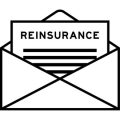1. Introduction to Low-Income Insurance Programs
Access to quality health care is a major concern for many Americans, especially those living on a limited income. Thankfully, there are government programs designed to help people who may not be able to afford private insurance. The two main programs providing this crucial support are Medicaid and the Children’s Health Insurance Program (CHIP). Understanding these programs is the first step toward knowing what dental and vision coverage might be available.
Medicaid: A Lifeline for Low-Income Families
Medicaid is a joint federal and state program that offers health coverage to millions of Americans, including families with low income, children, pregnant women, elderly adults, and people with disabilities. Each state manages its own Medicaid program within federal guidelines, so benefits can vary depending on where you live. Medicaid is often the only way for underserved communities to access vital medical services—including some dental and vision care.
CHIP: Health Coverage for Kids
The Children’s Health Insurance Program (CHIP) helps families who earn too much to qualify for Medicaid but still struggle to afford private insurance for their kids. CHIP covers children up to age 19 and sometimes includes pregnant women. Like Medicaid, CHIP is run by states, so what’s covered can differ depending on your location.
Why These Programs Matter
For many low-income individuals and families, Medicaid and CHIP are essential for getting basic health services. These programs often serve as the safety net that keeps children healthy and allows adults to get necessary medical attention. Dental and vision care may not always be top of mind, but they are important parts of overall well-being—and these programs can help cover those needs.
Key Features of Medicaid and CHIP
| Program | Who Qualifies? | Main Benefits |
|---|---|---|
| Medicaid | Low-income families, children, pregnant women, seniors, people with disabilities | Medical care, hospitalization, preventive services, some dental & vision (varies by state) |
| CHIP | Children & sometimes pregnant women in families above Medicaid limits but still low-income | Doctor visits, immunizations, dental & vision (usually more comprehensive for kids) |
Understanding how these programs work is key if you or your family need help paying for health care, especially when it comes to dental and vision services. In the next sections, we’ll look closer at exactly what kind of dental and vision coverage you can expect under these low-income insurance programs.
2. Dental Coverage: Whats Typically Included?
When it comes to low-income insurance programs in the U.S., such as Medicaid or CHIP, dental coverage can help families access essential oral health services without high out-of-pocket costs. While coverage varies from state to state and by program, there are some common types of dental care that are usually included for children, and sometimes for adults.
Common Dental Services Covered
| Service Type | Description | Who Is Usually Covered? |
|---|---|---|
| Routine Exams & Cleanings | Regular check-ups and cleanings to prevent cavities and gum disease | Children and sometimes adults |
| X-rays | Dental x-rays to spot problems early | Children and sometimes adults |
| Fillings | Treatment for cavities (tooth decay) | Children and sometimes adults |
| Sealants & Fluoride Treatments | Preventive treatments to protect teeth, mainly for kids | Mostly children |
| Extractions | Removal of teeth due to severe decay or infection | Children and sometimes adults |
| Emergency Care | Pain relief, infection treatment, or care after injury | Children and sometimes adults |
What Might Not Be Included?
While basic dental care is often covered, especially for children, there are some common limitations or exclusions in low-income insurance programs:
- Adults May Have Limited Benefits: In many states, adult dental coverage is limited or only covers emergencies.
- No Cosmetic Procedures: Procedures like teeth whitening or veneers are almost never covered.
- No Orthodontics for Adults: Braces and other orthodontic treatments are usually covered only for children when medically necessary.
- Dentures and Crowns: These may have strict limits or may not be covered at all for adults.
Quick Tip:
The best way to know what’s included under your plan is to check your state’s Medicaid website or ask your provider. Coverage can change depending on where you live and whether you’re enrolled as a child or an adult.
![]()
3. Vision Coverage: What’s Typically Included?
When you’re enrolled in a low-income insurance program like Medicaid or CHIP, vision coverage can be an important benefit for you and your family. However, the exact services included can vary by state and plan. Here’s a straightforward look at what’s usually offered and any potential limits you might encounter.
Standard Vision Benefits
Most low-income insurance plans include a basic set of vision care services. These benefits are designed to help with common vision needs, especially for children, but many adults can also get help with some services. Here’s what you’ll typically find:
| Service | What’s Covered? | Who Qualifies? |
|---|---|---|
| Eye Exams | Routine eye exams to check vision and screen for eye diseases | Children (almost always); Adults (coverage varies by state) |
| Prescription Glasses | Lenses and frames when prescribed after an exam | Children (usually covered); Adults (sometimes covered) |
| Contact Lenses | Covers contacts if medically necessary (e.g., certain conditions) | Mainly children; Adults if medically required |
Eye Exams
An annual eye exam is almost always part of the vision package for kids, and sometimes for adults too. These exams are important for spotting issues early—especially in school-aged children.
Prescription Glasses
If an exam shows you or your child need glasses, most plans will pay for a basic pair each year or every two years. There are often limits on frame styles or lens options (for example, basic plastic lenses vs. upgrades).
Contact Lenses
Coverage for contact lenses is usually limited to cases where glasses won’t work due to medical reasons. Cosmetic use of contacts is rarely covered.
Possible Restrictions You Should Know About
- Frequency Limits: Most plans only pay for one exam and one pair of glasses per year (or every two years).
- Frame & Lens Choices: Coverage often applies to standard frames and lenses only. If you want designer frames or special lens coatings, you may have to pay extra.
- Adult Coverage: Many states focus vision benefits on children under 21, so adult coverage can be limited or unavailable depending on where you live.
- Provider Networks: You may need to visit specific eye doctors who accept your insurance plan.
Key Takeaway:
If you’re relying on a low-income insurance program, routine vision care is usually available for kids and sometimes adults—but check your plan details to know exactly what’s covered and how often you can get new glasses or exams.
4. Eligibility and How to Access Benefits
Understanding who qualifies for dental and vision coverage under low-income insurance programs in the United States is important, especially if you want to take care of your health without breaking the bank. Here’s a simple breakdown of eligibility requirements and easy steps to enroll and find a provider.
Who Qualifies for Dental and Vision Coverage?
The main low-income insurance program in the U.S. that offers dental and vision benefits is Medicaid. Eligibility rules can vary by state, but here are some general guidelines:
| Group | Eligibility Criteria | Coverage Details |
|---|---|---|
| Children (under 21) | Families with income at or below state thresholds | Comprehensive dental and vision (checkups, cleanings, eyeglasses) |
| Pregnant Women | Low-income pregnant women as defined by each state | Varies by state; often includes dental exams and sometimes vision checks |
| Adults | Low-income adults; specific criteria set by each state | Dental and vision coverage varies widely; some states offer emergency-only or limited benefits |
| Seniors (65+) | Dually eligible for Medicaid & Medicare, or low-income seniors per state rules | Some states provide limited dental/vision coverage through Medicaid |
How to Enroll in Dental and Vision Benefits
- Check Your Eligibility: Visit your state’s Medicaid website or call their customer service line to see if you qualify based on income, family size, age, or disability status.
- Apply Online or In Person: Most states allow you to apply for Medicaid online, by phone, mail, or at local offices. You’ll need documents like proof of income, ID, and residency.
- Select a Plan (if required): Some states have managed care plans—choose one that covers dental and vision services.
- Wait for Approval: Once approved, you’ll get an insurance card and details about your benefits.
Finding a Dental or Vision Provider
After enrolling, finding a provider is straightforward:
- Check Your Plan’s Directory: Most plans have online directories listing dentists and eye doctors who accept your insurance.
- Call Customer Service: If you’re unsure, call the number on your insurance card for help locating nearby providers.
- Ask About Coverage: Before booking an appointment, confirm that the provider accepts your plan and check what services are covered.
If You Need More Help
If you have trouble finding information or enrolling, local community health centers or social services agencies can assist you with the process. Don’t hesitate to ask for help—they’re there to make sure you get the care you need!
5. Challenges and Tips for Maximizing Your Coverage
Common Barriers to Dental and Vision Care
Many people with low-income insurance plans, like Medicaid or CHIP, face some hurdles when trying to use their dental and vision benefits. Here are a few of the most common challenges:
| Barrier | Description |
|---|---|
| Provider Shortages | There aren’t always enough dentists or eye doctors who accept Medicaid or other low-income insurance plans. This can make it tough to find a provider nearby. |
| Long Waiting Periods | You might have to wait weeks or even months to get an appointment, especially for specialized care or in rural areas. |
| Limited Services Covered | Some plans only cover basic check-ups and cleanings, but not things like braces or advanced eye exams. |
| Confusing Rules | The rules about what’s covered can be hard to understand, which makes it easy to miss out on benefits you qualify for. |
Tips for Making the Most of Your Coverage
If you want to get the most from your dental and vision coverage under a low-income insurance plan, here are some simple steps you can take:
- Check Provider Lists Early: As soon as you get your coverage, look up which dentists and eye doctors near you accept your insurance. Call ahead to confirm they’re still taking new patients with your plan.
- Book Appointments in Advance: Because waiting times can be long, try to schedule routine visits several months ahead if possible.
- Ask About All Covered Services: When you visit your provider, ask them to explain what services are included under your plan—sometimes things like sealants for kids’ teeth or yearly eye exams are covered, but you have to request them.
- Use Preventive Visits: Take advantage of free or low-cost check-ups and cleanings. Preventive care helps catch problems early before they become bigger (and more expensive) issues.
- Contact Your State Medicaid Office: If you’re confused about your benefits or need help finding a provider, call the customer service number on your insurance card or visit your state’s Medicaid website for support.
Quick Reference: Ways to Get Help
| Resource | How It Helps |
|---|---|
| Your Insurance Card Hotline | Get answers about covered services and find providers in your network. |
| Your Local Health Department | Might offer lists of participating dentists and vision clinics that accept low-income insurance. |
| State Medicaid Website | Find updated information on benefits and downloadable provider directories. |
| Community Health Centers | Often provide dental and vision care on a sliding scale fee if you have trouble finding providers elsewhere. |


